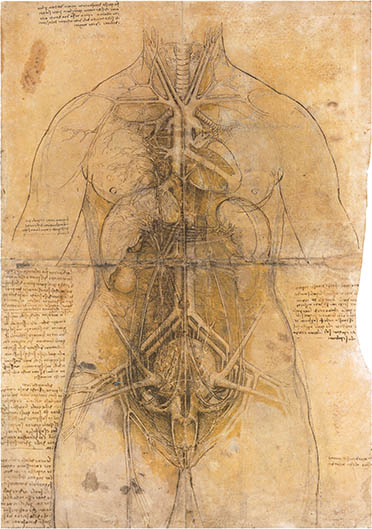 |
| Vitruvian Man |
 |
| Fetus and womb, ca.1510 |
 |
| Female genito-urinary system |
As I'm staying this week in Florence -the key city on the Renaissance- I couldn't avoid to write a post about Leonardo Da Vinci: His earliest studies recorded were of
topographical anatomy carried out in Milan starting around 1485. A decade later
he returned to the subject, having access to cadavers at the Ospedale di Santa Maria Nuova in Florence, where it appears he collaborated with the young
anatomist Marcantonio della Torre. His final period, at the Ospedale di Santo Spirito in Rome, started in 1513 only to be cut short by papal decree three
years later.
Leonardo was an Aristotelian, and later a Galenist,
and the accuracy of his anatomical sketches vary widely. Some are clearly
direct observations: e. g., he was the first to draw the coronary arteries. Others
were based on animal anatomy.
Excellent
photos of this post were taken by Luc Viatour from the Leonardo da Vinci exhibition at the Basilique de Koekelberg in September 2007. More photos of the exhibition (link provided)
For sure this will not be the last post about the Great Leonardo in facsimilium...
For sure this will not be the last post about the Great Leonardo in facsimilium...